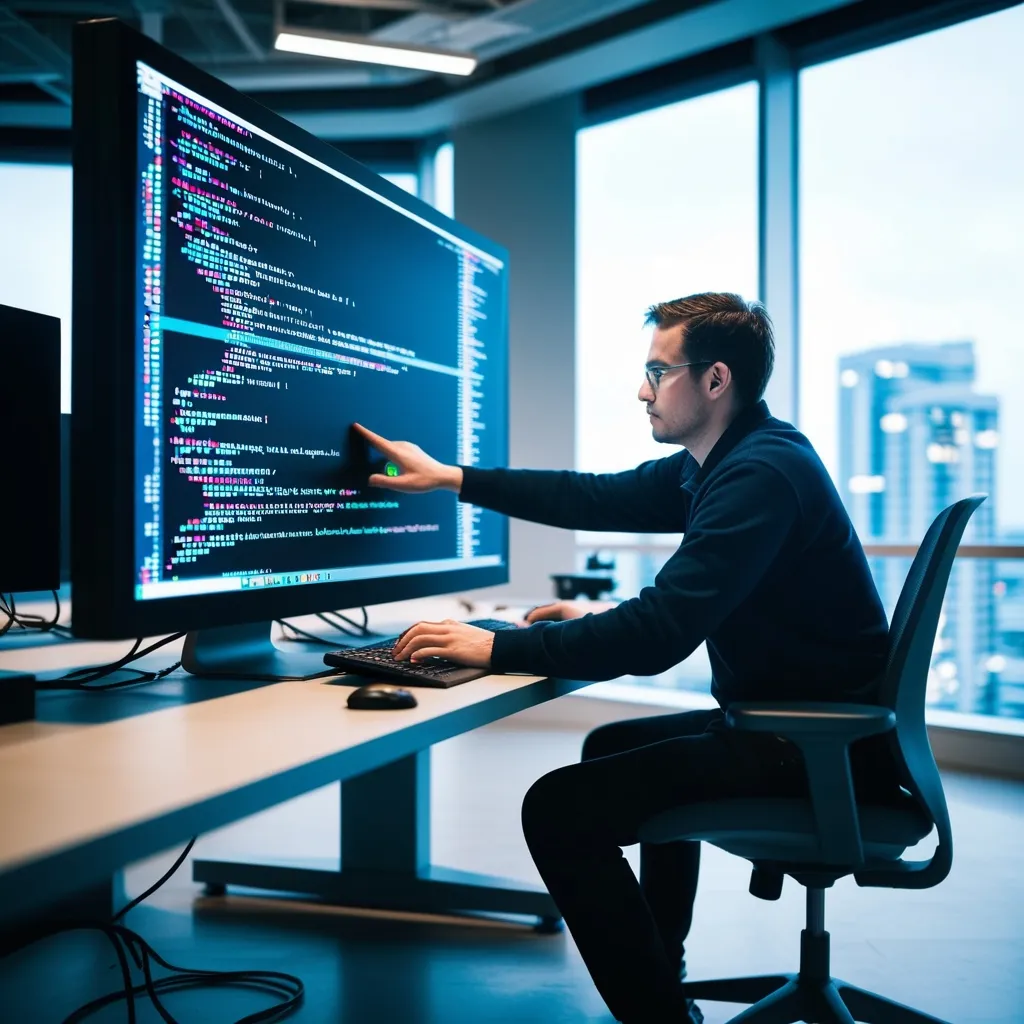Metaclasses in Python are often seen as a mysterious and advanced concept, but they’re actually pretty cool once you wrap your head around them. I remember when I first stumbled upon metaclasses - I was both intrigued and intimidated. But trust me, they’re not as scary as they seem!
At its core, a metaclass is simply a class that defines how other classes behave. It’s like a class factory, if you will. When you create a class in Python, you’re actually using a metaclass behind the scenes - the default type metaclass.
Let’s start with a simple example to illustrate this:
class MyClass:
pass
print(type(MyClass))
This will output <class 'type'>, showing that type is the metaclass for MyClass.
Now, why would we want to create our own metaclasses? Well, they’re super useful for creating domain-specific languages (DSLs) and enforcing API constraints. Imagine you’re building a framework and want to ensure that all classes using it have certain attributes or methods. Metaclasses to the rescue!
Here’s a basic example of a custom metaclass:
class ValidateFields(type):
def __new__(cls, name, bases, attrs):
for key, value in attrs.items():
if key.startswith('field_') and not isinstance(value, str):
raise TypeError(f"{key} must be a string")
return super().__new__(cls, name, bases, attrs)
class MyModel(metaclass=ValidateFields):
field_name = "John"
field_age = "30"
class InvalidModel(metaclass=ValidateFields):
field_name = "Jane"
field_age = 25 # This will raise a TypeError
In this example, our ValidateFields metaclass ensures that all attributes starting with field_ are strings. If we try to create a class with a non-string field, it’ll raise an error.
Now, let’s dive into creating a simple DSL using metaclasses. Imagine we’re building a mini-framework for defining API endpoints:
class APIEndpoint(type):
endpoints = {}
def __new__(cls, name, bases, attrs):
new_class = super().__new__(cls, name, bases, attrs)
if 'url' in attrs:
cls.endpoints[attrs['url']] = new_class
return new_class
class Endpoint(metaclass=APIEndpoint):
def get(self):
return "Method not implemented"
def post(self):
return "Method not implemented"
class UserEndpoint(Endpoint):
url = '/users'
def get(self):
return "Get all users"
def post(self):
return "Create a new user"
class ProductEndpoint(Endpoint):
url = '/products'
def get(self):
return "Get all products"
# Now we can easily access our endpoints
print(APIEndpoint.endpoints['/users'].get(None)) # Output: Get all users
print(APIEndpoint.endpoints['/products'].get(None)) # Output: Get all products
This DSL allows us to define API endpoints in a clean, declarative way. The metaclass automatically registers each endpoint, making it easy to manage and access them.
Metaclasses can also be used to implement the Singleton pattern:
class Singleton(type):
_instances = {}
def __call__(cls, *args, **kwargs):
if cls not in cls._instances:
cls._instances[cls] = super().__call__(*args, **kwargs)
return cls._instances[cls]
class DatabaseConnection(metaclass=Singleton):
def __init__(self):
self.connection = "Connected"
# No matter how many times we instantiate DatabaseConnection, we get the same instance
db1 = DatabaseConnection()
db2 = DatabaseConnection()
print(db1 is db2) # Output: True
Another powerful use of metaclasses is for automatic property creation. Let’s say we want to create a class where all attributes are automatically converted to properties with getter and setter methods:
class AutoProperty(type):
def __new__(cls, name, bases, attrs):
for key, value in attrs.items():
if not key.startswith('__') and not callable(value):
attrs[key] = property(
lambda self, key=key: getattr(self, f'_{key}'),
lambda self, value, key=key: setattr(self, f'_{key}', value)
)
attrs[f'_{key}'] = value
return super().__new__(cls, name, bases, attrs)
class Person(metaclass=AutoProperty):
name = "John"
age = 30
p = Person()
print(p.name) # Output: John
p.name = "Jane"
print(p.name) # Output: Jane
This metaclass automatically converts all non-callable attributes into properties, allowing us to add custom logic for getting and setting values if needed.
Metaclasses can also be used to implement abstract base classes:
class AbstractMeta(type):
def __new__(cls, name, bases, attrs):
for key, value in attrs.items():
if getattr(value, '__isabstractmethod__', False):
attrs[key] = abstractmethod(value)
return super().__new__(cls, name, bases, attrs)
class Abstract(metaclass=AbstractMeta):
def abstract_method(self):
raise NotImplementedError
class Concrete(Abstract):
def abstract_method(self):
return "Implemented!"
# This will work
c = Concrete()
print(c.abstract_method()) # Output: Implemented!
# This will raise a TypeError
a = Abstract() # TypeError: Can't instantiate abstract class Abstract
This metaclass ensures that any method marked as abstract must be implemented in subclasses.
While metaclasses are powerful, it’s important to remember the Python principle of “Simple is better than complex.” Don’t reach for metaclasses unless you really need them. In many cases, class decorators or even just regular inheritance can solve the problem more simply.
That being said, when you do need the power of metaclasses, they can be incredibly useful. They allow you to customize class creation, implement complex patterns, and create expressive DSLs.
One last example before we wrap up. Let’s create a metaclass that automatically logs method calls:
import functools
class LogMethods(type):
def __new__(cls, name, bases, attrs):
for key, value in attrs.items():
if callable(value):
attrs[key] = cls.log_method(value)
return super().__new__(cls, name, bases, attrs)
@staticmethod
def log_method(method):
@functools.wraps(method)
def wrapper(*args, **kwargs):
print(f"Calling method: {method.__name__}")
return method(*args, **kwargs)
return wrapper
class MyClass(metaclass=LogMethods):
def method1(self):
return "Hello from method1"
def method2(self):
return "Hello from method2"
obj = MyClass()
obj.method1() # Output: Calling method: method1
obj.method2() # Output: Calling method: method2
This metaclass automatically wraps all methods in the class with a logging decorator, allowing us to easily track method calls without modifying the original methods.
In conclusion, metaclasses are a powerful tool in Python that allow you to customize class creation and behavior. They’re great for creating DSLs, enforcing API constraints, and implementing complex patterns. While they might seem daunting at first, with a bit of practice, you’ll find they’re not as scary as they seem. Just remember to use them judiciously - sometimes simpler solutions are better. Happy coding!






